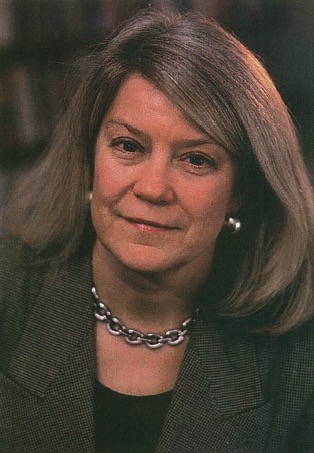By LAVINA MELWANI, NEW YORK
Imagine being covered in colors from head to toe and having to walk several blocks in crowded Manhattan. This is the predicament Diana Eck, Director of the Pluralism Project at Harvard University, found herself in after attending an avid celebration of the Hindu Holi festival at the Pushtamargi Temple in Sayerville, New Jersey. “They had a bonfire in the parking lot and were throwing colors back and forth between the pujari [priest] and the worshipers,” she recalls. “All of us were smeared with red powder. I was splattered with color all over my face, my hair, my clothes. I didn’t quite know what to do. So I just drove into Manhattan, through the toll booth, and parked in a garage in the Upper West Side and walked five blocks to the apartment building I was staying in. Literally no one noticed my appearance, and that is a tremendous testimony on the diversity of New York City. I was walking home from Holi as if I were in Vrindavan!”
Dr. Diana L. Eck has been following the growth of Hinduism in America for many years. She is also Chair of the Committee on the Study of Religion in the Faculty of Arts and Sciences and a member of the international presidium of the World Conference on Religion and Peace. Eck has spent some time at Banaras Hindu University and is the author of Banaras, City of Light and Darshan: Seeing the Divine Image in India, among other books. Beginning around 1990, she noticed more and more second-generation South Asians in her classes, children who had grown up in America as Hindu, Muslim, Sikh or Jain. She recalls: “I realized at that point how much the religious communities of America must be changing. I developed a research project that used Harvard students, employed them as summer researchers to do hometown research in Denver, Houston, Salt Lake City and Chicago to find out exactly what was happening.”
From these early beginnings evolved the Pluralism Project, which is funded by the Lilly Endowment and the Pew Charitable Trusts, and the end result was On Common Ground: World Religions in America [see article directly above]. The most exciting part for all the researchers involved with the project was the illuminating hands-on experience of doing the research, of putting themselves over and over in the position of being a stranger in someone else’s community. Eck herself recalls witnessing Baisakhi celebrations at a gurudwara (Sikh temple) in Fairfax County, Virginia. “I remember arriving at that gurudwara at six in the evening as a total stranger and leaving at midnight from the midst of what really felt like a new family.” One of the things Eck has noticed in her research is the gradual Americanization of Hinduism as it takes root in this country. She observes, “The Hindu temple in Troy, Michigan, is very unusual as an American Hindu temple because it has brought together people from a vast spectrum of society who have tried to design a Hindu temple that really is American.” The temple is designed in the typically Western way, with a vast auditorium, lockers for shoes, a large kitchen, skylights and a big congregation hall. She says, “They actually hired an architect to design not a Chola Hindu temple, but an American Hindu temple.”
Eck, who has visited many temples and witnessed countless rituals, finds that traditions of North and South India often merge in America as the Indians here try to find a happy compromise. She recalled how the elaborate Ram Navami celebrations at the temple in Troy included the marriage of Sita and Ram in a typically South Indian context followed by rounds of Om Jai Jagdish Hare, a time-honored North Indian song. And in a nod to the Americanization of Hinduism, this was followed by a delightful play about Hanuman versus Superman by high school students. She says, “The play was touchingly devotional, but entirely presented in an American teenage idiom that was very winning.”
Still, there exists an obvious gap between our “live and let live” attitude and our actual living together. Eck believes Americans need to step up from simple, passive tolerance to active pluralism. “Tolerance lets lie the half-truths and the half-baked stereotypes we hold. If there are incidents of vandalism, people aren’t prepared to respond because they just don’t have accurate information. Our diversity is encountered in very critical areas–schools and colleges, hospitals and the military–so we certainly do need to know more about each other. That, to me, is the difference between mere tolerance and an active, generative pluralism, which requires an engagement beyond tolerance.”


